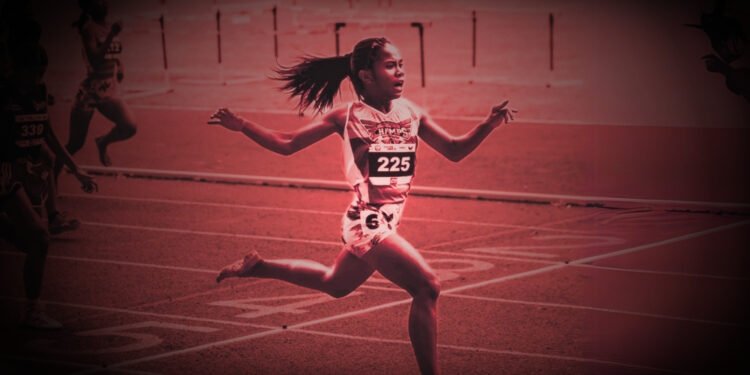On her 11th birthday, Trixia Anne Arellano didn’t just win a race — she shattered a 17-year-old national record at the 65th Palarong Pambansa. She ran the 200-meter dash in 26.40 seconds, eclipsing a long-standing mark set in 2008.
But what caught the nation’s attention wasn’t just the time.
It was the fact that she did it barefoot.
Photos of Trixia sprinting down the track with her toes taped and her feet exposed have since gone viral. Her speed was unmatched. Her form — flawless. But behind the applause and the headlines lies a tougher truth: Trixia shouldn’t have had to run barefoot in the first place.
A Triumph — But Also a Warning
Trixia ran not in custom track spikes or branded shoes, but with strips of tape wrapped around her toes — a makeshift barrier between her and the scorching synthetic track in Laoag City.
This wasn’t a performance choice. It was a necessity.
While her competitors wore high-performance footwear, Trixia sprinted with the kind of raw talent that can’t be coached — only sharpened. And she did it without the very tools that many athletes take for granted.
Because for many young athletes in regional delegations across the Philippines, access to proper footwear isn’t a guarantee. It’s a luxury.
Why Footwear Matters
It’s important to understand what Trixia was up against, biomechanically.
Sprint spikes provide measurable advantages: better grip, reduced ground contact time, and optimal force distribution.
Studies show that competitive runners can improve by up to 3–4% simply by using proper footwear. Barefoot running, especially on hard synthetic tracks, increases the risk of injury, fatigue, and long-term joint issues.
So Trixia didn’t just break a record. She broke it while overcoming a physical disadvantage. That’s not just grit — it’s elite resilience.
A Glimpse Into Systemic Gaps
Arellano’s performance shines a spotlight on the wider reality facing grassroots athletes in the country.
Too many are training in rural barangays without facilities. Too many are reusing torn shoes or taping their feet just to compete. They enter the same events as well-funded teams, but carry vastly different levels of support.
And the truth is: they shouldn’t have to go viral to be noticed.
She’s Not the First. But She Should Be One of the Last.
Trixia joins a rare line of barefoot champions — from Abebe Bikila, the Ethiopian marathoner who won gold at the 1960 Olympics barefoot, to Zola Budd, who represented Great Britain in the 1980s without shoes.
Both became global icons. But both also paid physical costs — and revealed the inequality embedded in the system that celebrated them.
In the same way, Trixia’s barefoot win shouldn’t be romanticized. It should be a call to action.
What Comes Next
Yes, we should celebrate her. But the celebration must come with investment. With support. With gear. Because greatness shouldn’t require going viral. It should be nurtured long before the headlines.
Trixia Arellano ran through a system that wasn’t built for her — and still made history. Imagine what she could do with the basics.
Now it’s on us to make sure her story isn’t just inspiring — but transformative.












